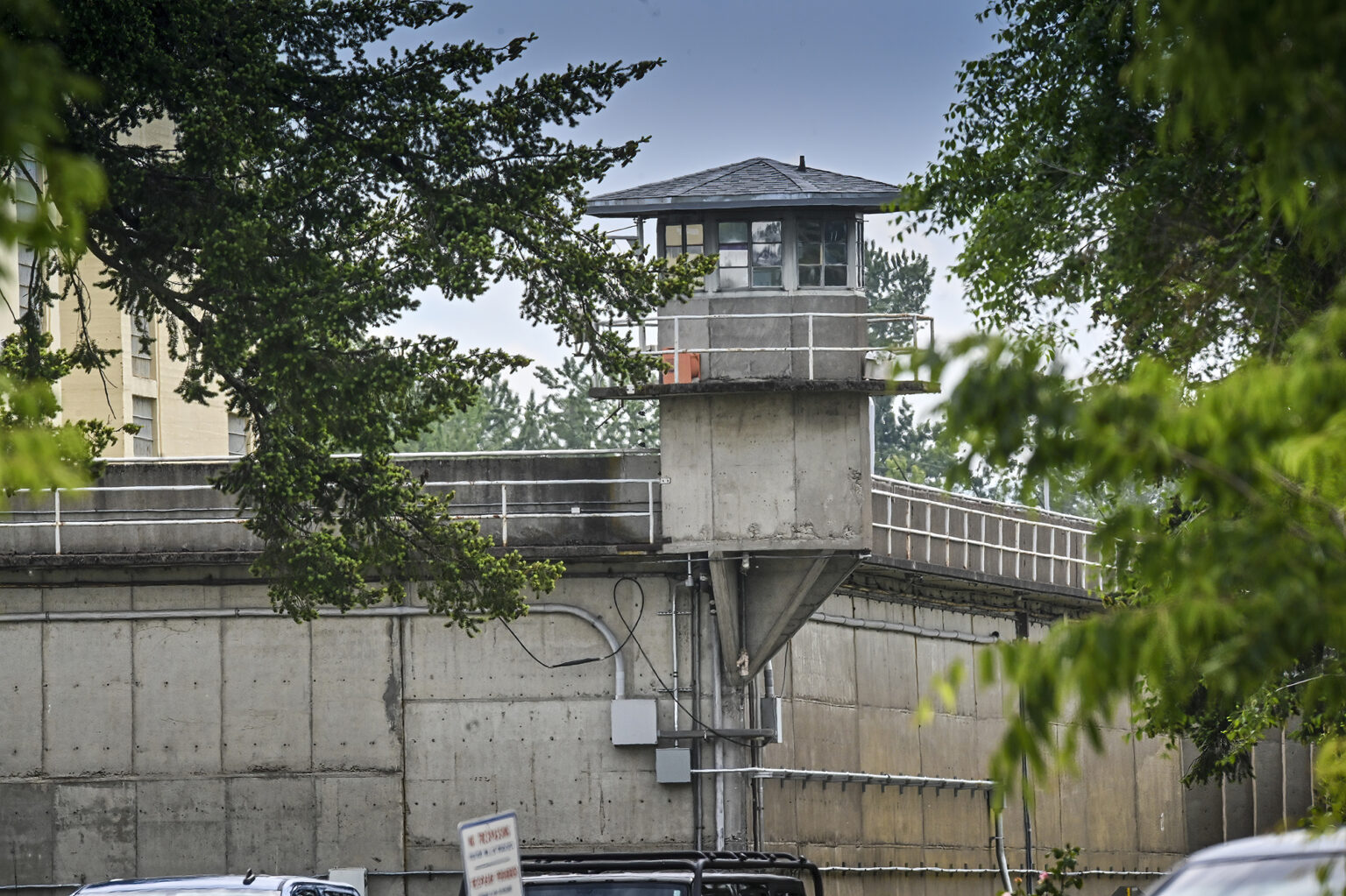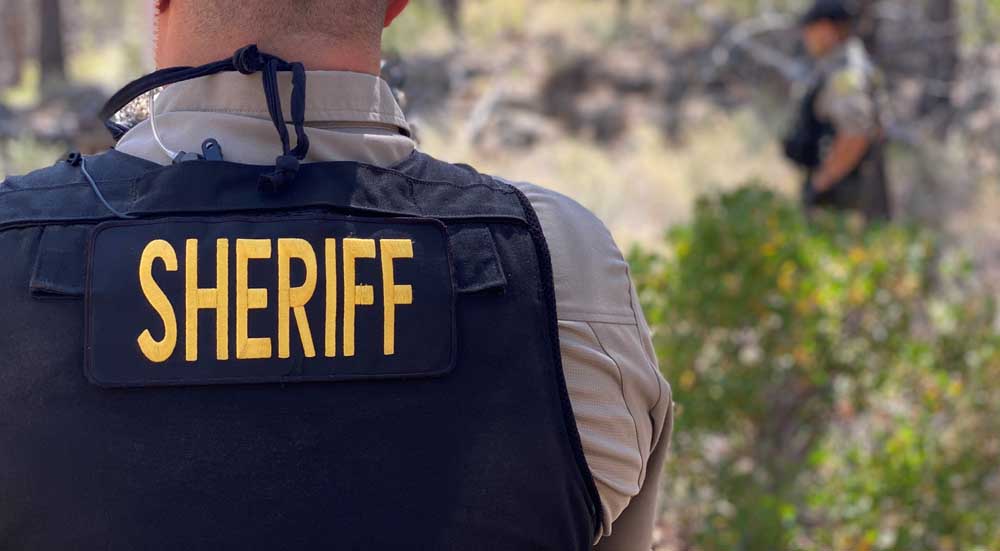Groups rally against bill that would exempt Umatilla County from statewide nuclear ban
Published 6:35 am Tuesday, May 20, 2025

- Representatives from nonprofit environmental, community and physicians groups and Oregon tribes rallied against House Bill 2410 on May 19, 2025. The bill would exempt Umatilla County from the state’s ban on new nuclear projects. (Photo by Alex Baumhardt/Oregon Capital Chronicle)
Rally attendees said Oregon politicians and businesses continue to treat northeast Oregon as an ‘environmental sacrifice zone.’
A bill that would exempt Umatilla County from the statewide ban on new nuclear energy facilities has drawn the opposition of environmentalists, tribes, doctors and northeast Oregon community groups who showed up Monday at the Capitol in Salem to rally against it.
If passed, House Bill 2410 would allow the state’s Energy Facility Siting Council to approve development of a modular nuclear reactor in northeast Oregon’s Umatilla County. Oregon voters in 1980 approved a statewide ban on new nuclear development, barring the federal government creating a national repository for nuclear waste or voters deciding to appeal. Neither has happened.
The bill’s architects characterize it as allowing a “demonstration project” of modular nuclear that would operate on a microgrid and support “community energy resilience.” Small reactors have about one-third the generating capacity of a traditional reactor, according to the International Atomic Energy Agency, and can power individual neighborhoods, factories and facilities such as data centers that consume large amounts of energy.
Bill sponsor state Rep. Bobby Levy, R-Echo, has touted it in hearings as a clean energy solution to growing power demand in the state. Levy declined an interview Monday, but she told the Capital Chronicle in an email that local residents and the state would benefit from “reliable, carbon-free baseload power, job creation, and potential economic growth through new infrastructure investments.”
“At the broader level, small-scale nuclear would also contribute to Oregon’s clean energy goals, supporting a resilient and diversified energy mix across the state,” she said.
Nuclear energy does not directly produce carbon dioxide or other greenhouse gases contributing to climate change, and it can produce more energy with less fuel than any other individual source of existing power, according to MIT.
But protesters Monday said they suspect House Bill 2410 is less about “community energy resilience” than powering Umatilla County’s booming data centers. The protesters said eastern Oregon lawmakers continue to treat the state’s northeast corner like an “environmental sacrifice zone,” noting that there is nowhere to safely store nuclear waste.
The bill passed 8-4 with recommendation in April from the House Committee on Climate, Energy and Environment, of which Levy is a vice-chair, to the Joint Ways & Means Committee. Another nuclear bill currently in the Ways & Means Committee, House Bill 2038, is also co-sponsored by Levy, and has drawn concerns from environmental and community groups as well as tribes. It would create a committee to study the benefits and risks of developing nuclear energy facilities in Oregon.
“The Umatilla Basin is one of the most polluted places in Oregon, some of the worst groundwater pollution in the state, some of the worst industrial air pollution in the state, and it just keeps getting worse. Now we’re talking about adding radioactive waste on top of that?” said Kaleb Lay, policy director at Oregon Rural Action, at the rally.
Representatives from nonprofit environmental groups Columbia Riverkeeper and the Sierra Club of Oregon and Oregon Physicians for Social Responsibility also attended.
Data demand
Demand for power from the Umatilla Electric Cooperative, which supplies electricity to the region, has grown 556% in the last decade according to recent analysis by the nonprofit research organization Sightline Institute. Nearly all of that is from Amazon data centers in the county. Amazon and Microsoft are investing billions in small scale nuclear reactors to power their data centers, including those in eastern Oregon, and Microsoft CEO Bill Gates last year invested $1 billion into a nuclear power plant in Wyoming, operated by his new company TerraPower.
Levy said it is an “oversimplification” to suggest data centers are the only or primary beneficiaries of modular nuclear reactors.
“The reality is that all ratepayers benefit from a more stable, reliable, and carbon-free energy supply — especially as demand across sectors continues to rise,” she said.
The bill has so far drawn 168 letters of testimony, about 75% of them in opposition to the bill. Many expressed concerns about where nuclear waste would end up and environmental concerns about uranium mining, especially on native land.
The bill would bar “high-level radioactive waste” from being stored at the demonstration project site after the U.S. Nuclear Regulatory Commission terminates the project’s operating license, but it does not include details about where waste would eventually end up.
It’s supported by members of the Morrow and Umatilla county commissions.
“I’m very excited that someone else is willing to take on the experiment risk, and they’re close enough that we can, hopefully if it goes well, benefit from it,” Morrow County Commissioner Jeff Wenholz recently told Elkhorn Media Group.
Across the river
Cathy Sampson-Kruse, 71, a member of the Confederated Tribes of the Umatilla Indian Reservation, grew up in Umatilla County and went to high school in Echo. She said her family members that still live there do not support the bills.
“We have to ask ourselves, really, who is this supply for?” Sampson-Kruse said. “And what is it really taking away from generations of children that do not have a say in this — just like we’re going to have generations of children that are going to deal with the Hanford debacle.”
The problem with where to put nuclear waste continues to plague the Hanford Site across the Columbia River north of Richland, Washington, where the Washington Department of Ecology, the U.S. Department of Energy and the Environmental Protection Agency are trying to figure out how to move 56 million gallons of radioactive sludge. The sludge is a byproduct of World War II-era plutonium production that still sits 80 years later in 177 underground tanks, some of which are leaking.
The agencies are hoping to move at least 2,000 gallons of that sludge via rail or truck through Oregon to facilities in Utah and Texas that can process it into a grout cement and dispose of it. The proposal doesn’t yet detail a route, but critics have said it would most likely end up on major interstate highways through Oregon, or on a rail line through central Oregon along the Deschutes River, passing near areas like Bend and the Confederated Tribes of the Warm Springs Reservation.
Oregon Gov. Tina Kotek is opposed to the plan as proposed by the agencies.
House Bill 2410 is not the first time state or federal governments have proposed sacrificing the health of the environment for industry when it comes to power in the Northwest, Sampson-Kruse said. She was a child when the Dalles Dam was constructed, flooding the Celilo Falls where Northwest tribes traditionally fished.
“Now, one of our most beloved natural foods, the salmon, is on the list for extinction. It constantly begs the question, how much more? Where do we draw the line?” Sampson-Kruse said.









